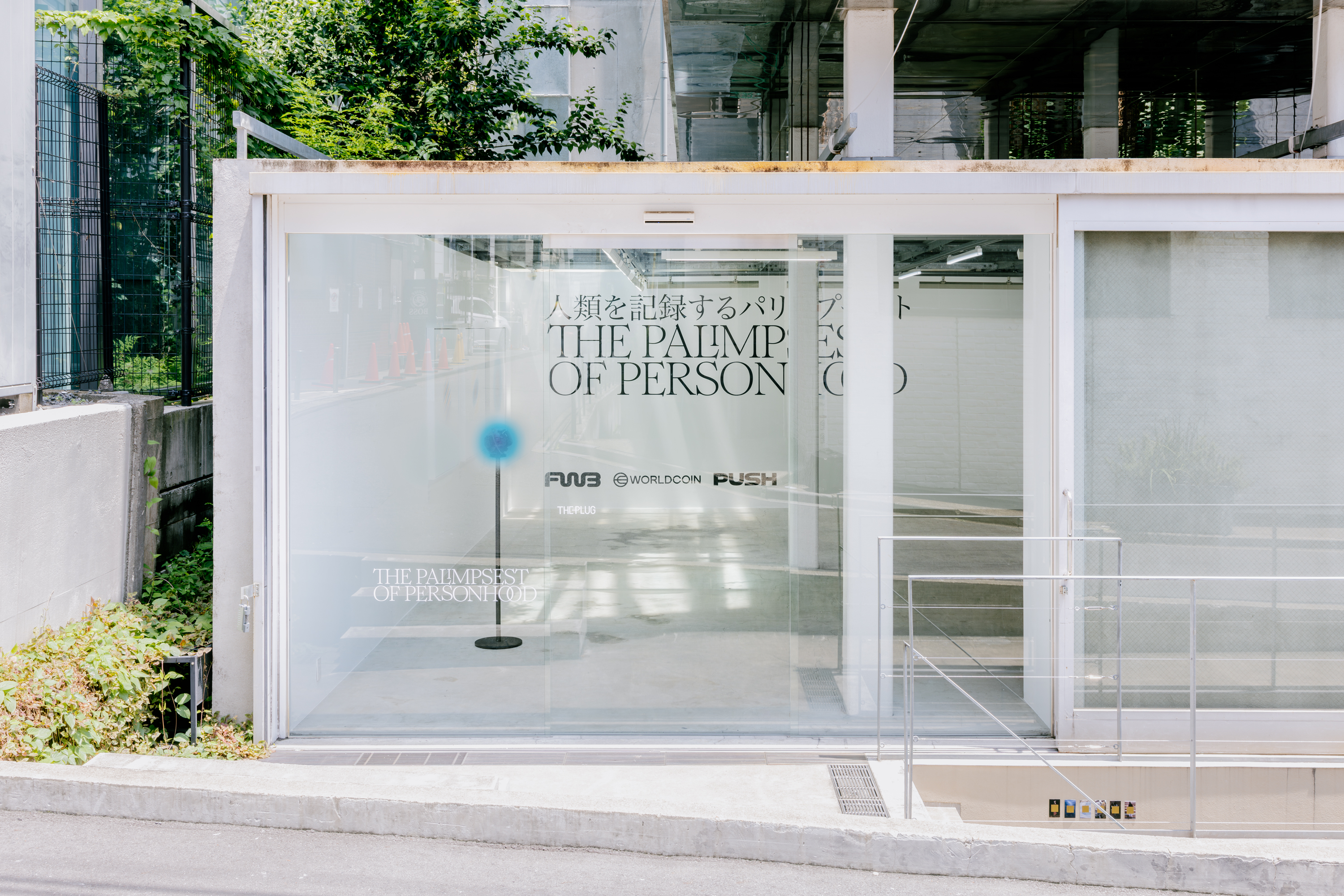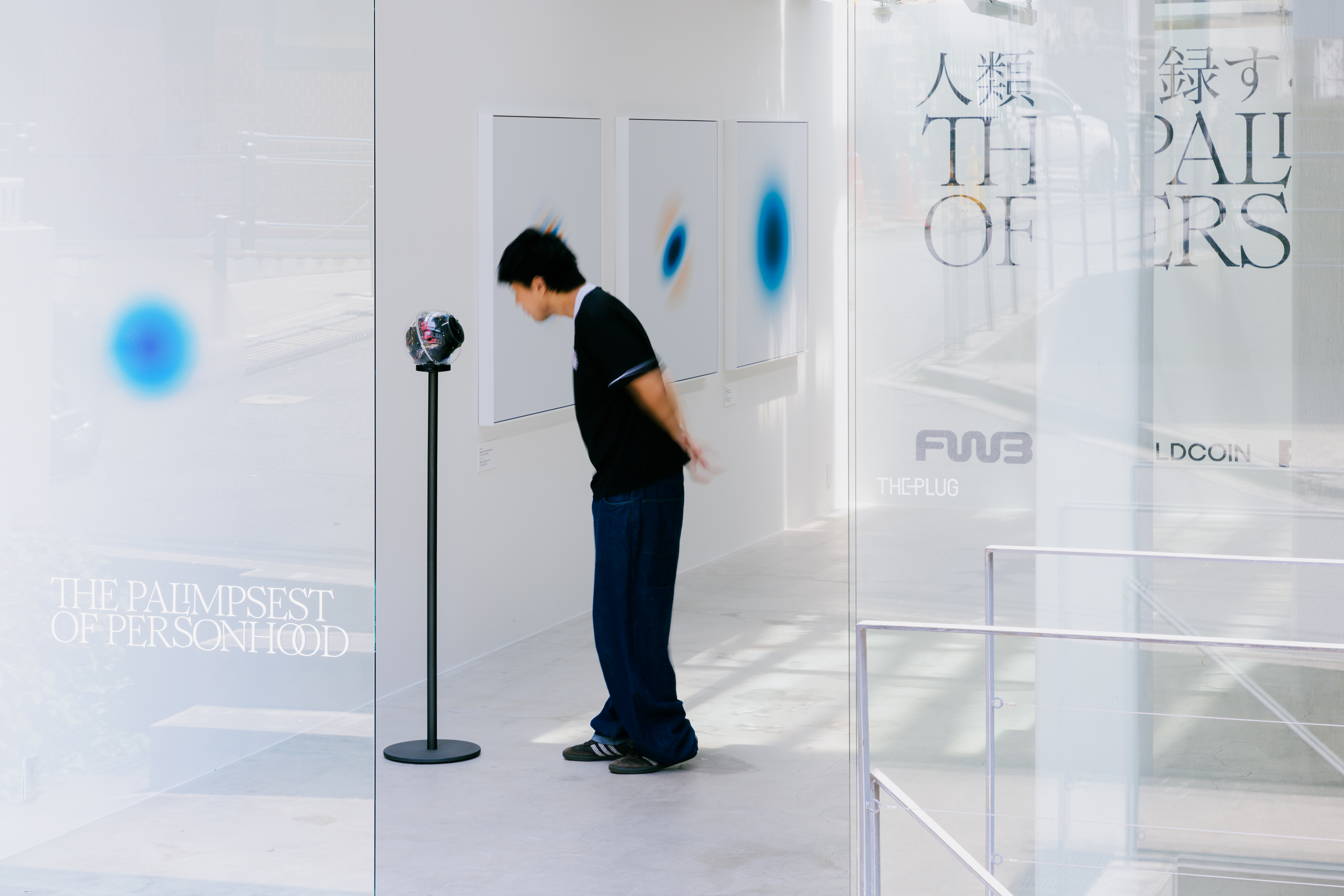The Palimpsest of Personhood
Original essay by Mike Sunda, for “The Palimpsest of Personhood” exhibition in Harajuku, Tokyo, July 6th & 7th, 2024The Palimpsest of Personhood

“What does it mean to be human?” This is a question that societies around the world have explored consistently throughout history. From ancient Greek mythology to Gothic horror, Irish folklore to Afrofuturism, our predecessors and contemporaries have interrogated the existential themes of artificial intelligence and simulation theory, long before the advent of the internet. One need not be Chronically Online to have grappled with Roko’s Basilisk – we’ve grown up with such thoughts and concerns embedded in mainstream media, school curricula and counterculture; each instance rooted in different customs, understandings and beliefs. Each time we enter into discourse around AI and personhood, voice our opinions, express them in art and culture, we write our perspective on top of the layers and layers of explorations that have come before us. Intentionally, unintentionally, we challenge the dominant narrative, or we crystallize it.
This is The Palimpsest of Personhood.
FWB is a platform that encourages people to engage with emergent technology, culture, and the resulting discourse. After an inaugural 2024 collaboration with Worldcoin at Feria Material, Vol. 10 during Mexico City’s Art Week, we return to build on that edition’s theme – The Paradox of Personhood, which examined the dichotomous relationship between technological optimism and the complexity of our current age. With this iteration, we call attention to the cultural mores and dynamics that guide our understanding of the world. Hence, the Palimpsest: originally, a wax tablet on which the author would repeatedly write and erase inscriptions, and which has evolved to represent any object, either literal or metaphorical, which contains layered, contested, overlapping and mutating meanings.
Japan is a particularly suitable backdrop for considering contested meanings. Throughout history, Japan’s cultural output has never been absent from the global stage, and yet in contemporary times it has been consumed through a prism of Orientalist and even self-essentializing ideologies (the ghosts of nihonjinron remain present even in the nation’s current “Cool Japan” strategy). Coinciding with the timing of the Tokyo Gendai international art fair, which brings together such a globally diverse set of creators and curators, we can collectively seek to identify the cultural biases that have led us here.

At the same time, I frequently revisit art historian Xin Wang’s 2017 e-flux article on “Asian Futurism and the Non-Other”, in which they so presciently noted that: “The post-internet condition has also transformed the game of self-reflexivity in art and its medium. Art practitioners can no longer monopolize or even excel at this form of introspection, which is being overtaken by the most inspired TV shows, video games, and even memes.” If this essay itself can be considered a contribution to the Palimpsest of Personhood, it will inevitably be buried under the layers of memes that truly shape our comprehension of the topic in 2024.
Let us return to what should be a relatively familiar and shared territory: the trajectory of popular science fiction that was surely the “top layer” of the Palimpsest during the post-war decades. Largely shaped by Hollywood and a western, Judeo-Christian ideological foundation, where better to reflect on unconscious cultural osmosis than in Japan, which offers a familiar yet contrasting perspective on technology? In the 1950s to 1970s, America witnessed the rise of the contemporary Adamic in the form of the U.S. space program: NASA’s key positions during this foundational period were filled by evangelical Christians, and many astronauts carried Bibles in their spacesuits as they set off for a redemptive restart on another world. At the same time, Japan’s vision of the posthuman was an infant child, Astro Boy, in a world where humans and advanced technology could peacefully coexist, long before Japan possessed the reputation for science and technology that it currently boasts. This has continued, since – for every Terminator and “Murder at the End of the World”, there is a corresponding positive expression of techno-animism, from Doraemon to Gundam.
As Japanese pop culture has spread in popularity throughout the world, fast-tracked by digital media distribution and globalized e-commerce, it has increasingly influenced broader discourse on cyberculture. And yet, old habits die hard. More than a few readers will be familiar with the clip of venerated Studio Ghibli director Hayao Miyazaki, who, upon being shown a clip of some particularly uncanny AI-generated humanoids, remarked, “I strongly feel that this is an insult to life itself.” In English-language publications, his reaction is frequently referenced as a wholesale critique of AI – a reading that projects both western technophobia and an essentializing of Japanese cultural tropes around craftsmanship. It misses the additional context: Miyazaki recalls a close friend with physical disabilities, saying, “Whoever creates this stuff has no idea what pain is.” Not only is it presumptuous to assume that Miyazaki is not aware of Japan’s many innovative developments in AI designed to alleviate pain – from the PARO therapeutic seal to newer inventions such as the Qoobo and Lovot – but it also ignores the Studio Ghibli cinematic oeuvre itself, full of robots that play the role of benevolent caretakers.
Let us take this opportunity to reflect on the myriad cultural touchpoints that have influenced our individual and collective attitudes towards AI. We have seen that previous generations have all struggled to define personhood, and this task has not been made easier with recent technological developments: robots solving captchas, generative goo, deepfakes; the Worldcoin products do not shy away from the paradox of personhood, nor are they exempt from the Palimpsest. We invite you to explore where the Orbs sit within your cultural lexicon – and to make your own contribution to the Palimpsest.
